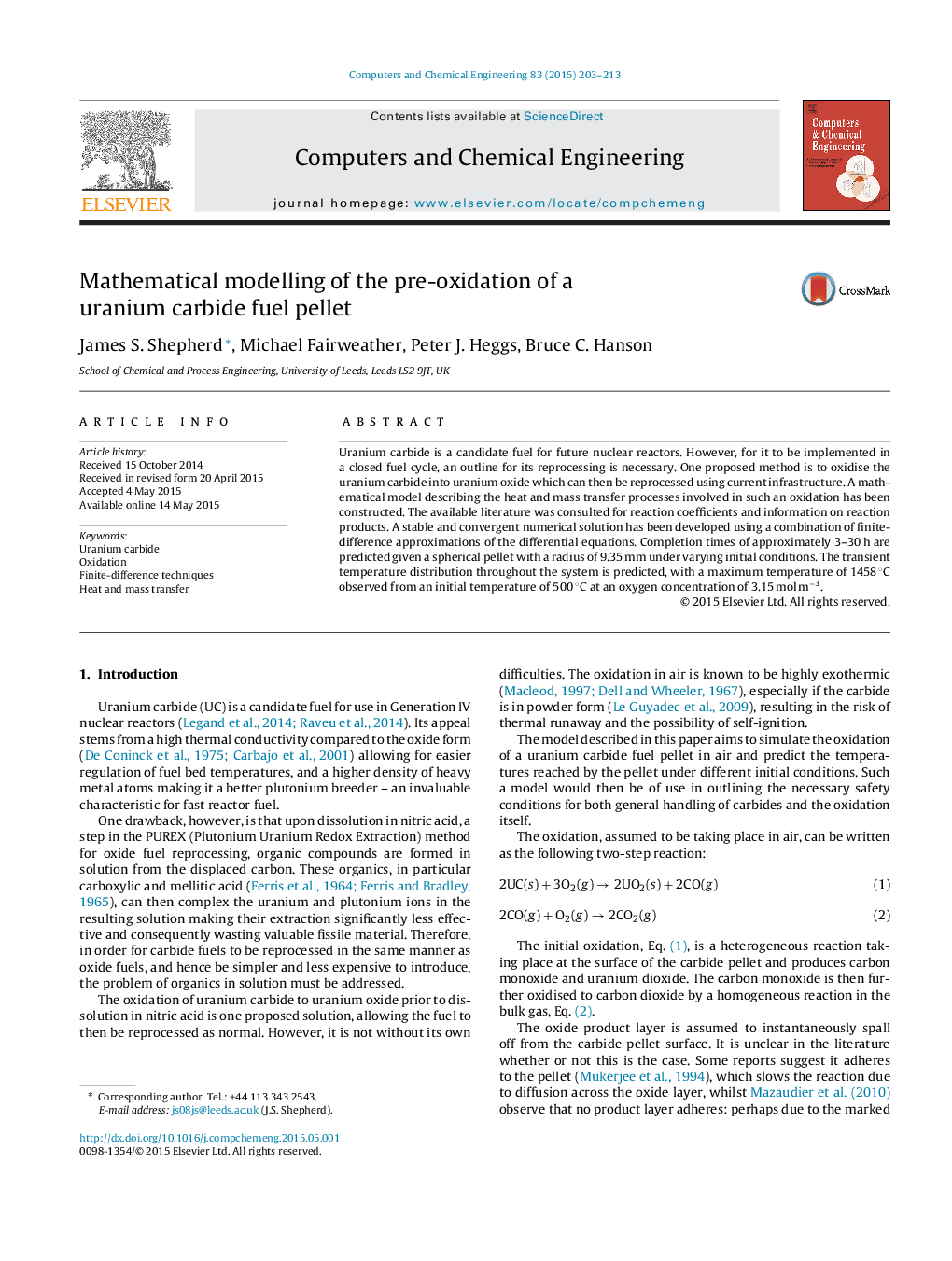| Article ID | Journal | Published Year | Pages | File Type |
|---|---|---|---|---|
| 172171 | Computers & Chemical Engineering | 2015 | 11 Pages |
•A model of the oxidation of a uranium carbide pellet in air is chosen.•Heat and mass transfer processes described using finite difference approximations.•Non-linear numerics solved using iterative methods.•Increasing temperature and oxygen concentration increase reaction rate.•Small amount of thermal runaway predicted towards reaction completion.
Uranium carbide is a candidate fuel for future nuclear reactors. However, for it to be implemented in a closed fuel cycle, an outline for its reprocessing is necessary. One proposed method is to oxidise the uranium carbide into uranium oxide which can then be reprocessed using current infrastructure. A mathematical model describing the heat and mass transfer processes involved in such an oxidation has been constructed. The available literature was consulted for reaction coefficients and information on reaction products. A stable and convergent numerical solution has been developed using a combination of finite-difference approximations of the differential equations. Completion times of approximately 3–30 h are predicted given a spherical pellet with a radius of 9.35 mm under varying initial conditions. The transient temperature distribution throughout the system is predicted, with a maximum temperature of 1458 °C observed from an initial temperature of 500 °C at an oxygen concentration of 3.15 mol m−3.
